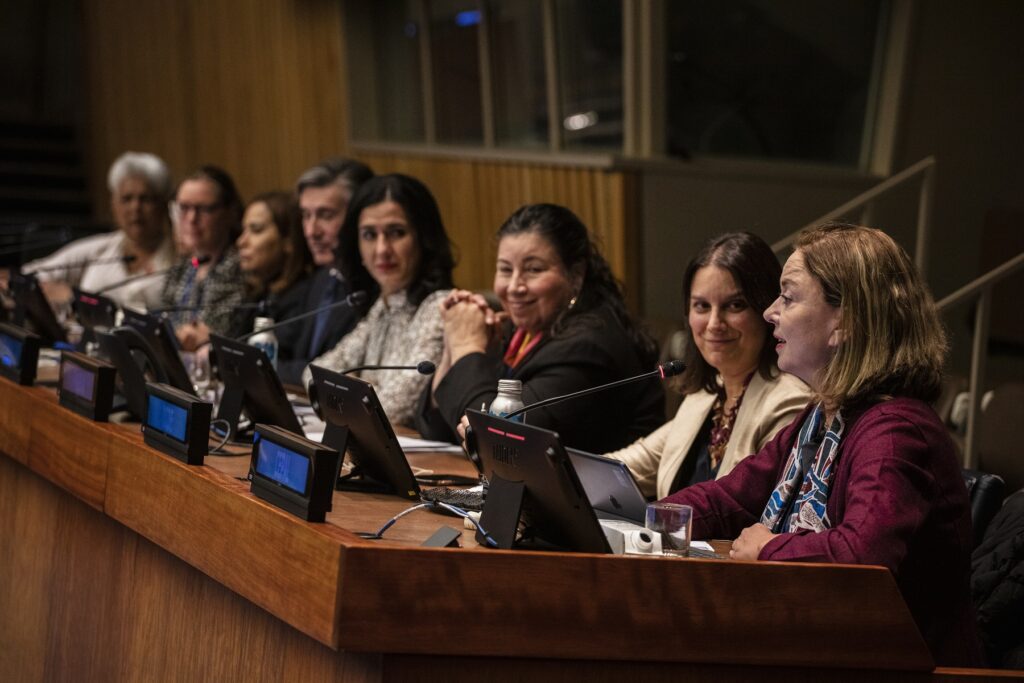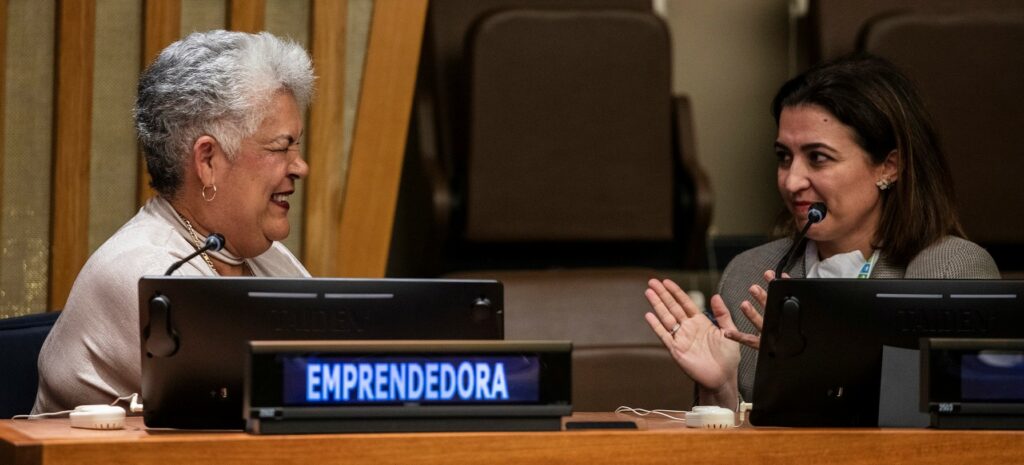In the last decade, women’s exclusion from the digital world has deprived low- and middle- income countries of up to USD 1 trillion of their gross domestic product (GDP), a loss that could rise to USD 1.5 trillion by 2025 without action. That is the conclusion of UN Women’s Gender Snapshot 2022 report.
Despite national and international public and private initiatives, there persists a significant digital gap regarding the access to digital tools and digital literacy. According to the International Telecommunications Union (ITU), the United Nations specialized agency for information and communication technologies, 34% of the world’s population, 2.7 billion people, still don’t have access to internet and 69% of men use it compared to 63% of women.
In Spain, 96% of households have internet access, according to Eurostat, and a minimum 100 MB/sec internet connection is being guaranteed through legal mandate. Official statistics estimates around 33.5 million users and has informed of a decrease in gender gap from 1.8 in 2017 to 0 in 2022.
However, similar to the situation in more developed countries, girls don’t access to degrees or careers related to technology as much as boys do. This has been explained by OECD Education Gender ambassador, Marta Encinas-Martín and tackled in the report Gender, Education and Skills: The persistence of gender gaps in education skills, launched in Madrid last March 2nd.
In less developed countries, 407 million people used internet in 2022. These are data from an ITU study that shows how 720 million people from these countries who don’t have internet connection represent 27% of the world’s population. In these regions, women are even more excluded: in Latin America, 70 million women don’t use mobile internet (according to GSMA).

Panelists from international organizations, in the conference organized by the BBVAMF in United Nations
BBVAMF supports digitization in Latin America
Such gaps in access to technologies and digital skills are an obstacle to financial inclusion, small businesses’ progress. In the case of e-commerce, it offers MSMEs (Micro, Small and Medium Enterprises) the opportunity to access new markets and to gain more profits. But once again, gender stereotypes, digital illiteracy or lack of access and connectivity are major hindrances for women entrepreneurs, especially for those under vulnerable conditions.
This is one of the key issues tackled at ‘Connecting Women in Latin America: The Roadmap Ahead’, an event organized by BBVA Microfinance Foundation (BBVAMF) at the United Nations headquarters in New York.
A foundation that is marking 15 years of activity, during which time it has supported over 6 million people in vulnerability (65% of whom are women). This figure triples when their families are counted. Over this period its microfinance institutions have disbursed more than USD 18 billion in microcredits to low-income entrepreneurs. By 2025 the Foundation is projected to disburse nearly USD 5 billion more.
Javier M. Flores, CEO of BBVAMF, explains that “facilitating the businesses of the vulnerable female entrepreneurs that we serve to use technology is an ongoing challenge that we continue working on, with a value offering that has been tailored to their needs, using digitalization and training initiatives. Our data enables us to design products targeting their welfare, such as micro-insurance for cancer, at a cost of between USD 1 and USD 3 a month. Supporting them so that they escape poverty has a multiplier effect because women invest in their families’ education, healthcare, and nutrition to a greater extent.”
Technology for women
The Panamanian entrepreneur Julia Sandoval embodies the voice and effort of millions of women. Julia creates jobs in her restaurant for single women who are heads of households, because she was in their same situation. “I managed to get on by preparing meals. I have always been a fighter; I have succeeded in the goals I set myself; I started right at the bottom, I got an education for my children and now for my grandchildren”, she recounts with pride. A grandmother who lets nothing stand in her way and who learned during the pandemic to sell the dishes from her restaurant on Whatsapp, Facebook and Instagram. Now she has become the correspondent agent for BBVAMF’s microfinance institution in Panama, Microserfin, and uses her tablet from her restaurant to offer all the services you would get from a branch office. She even teaches other women of her age how to use the mobile banking app, so that they can access financial services without having to travel to the branch office.

Panamanian woman entrepreneur Julia Sandoval (left) and Laura Fernández, head of Sustainability and Women, during the BBVAMF conference in United Nations
Julia Sandoval is a paradigm because she has succeeded in overcoming so many of the obstacles that account for why most women in vulnerability do not use technology, obstacles that have been discussed by the expert panel during this event. Barriers such as the lack of resources to pay for mobile data and devices, absence of digital skills, and prejudices such as that technology is not for them. These obstacles are exacerbated by the greater burden of unpaid care tasks borne by women, as pointed out by María Noel Vaeza, Regional Director of UN Women for the Americas and the Caribbean.
As stated during the CSW by Doreen Bogdan- Martin, Secretary-General of the International Telecommunication Union (ITU), the United Nations specialized agency for information and communication technologies, “We have a unique opportunity to ensure Gender Equality happens in our lifetimes. It is in our power to make digital technologies and innovation truly work for everyone. Together let’s deliver on the potential of digital tech for all women and girls around the world.”

